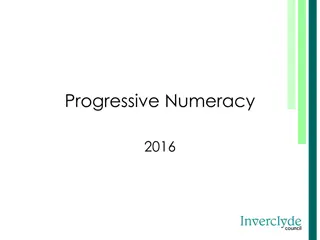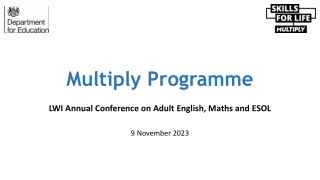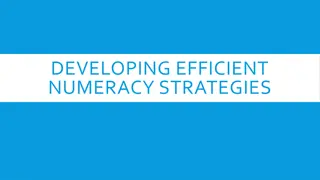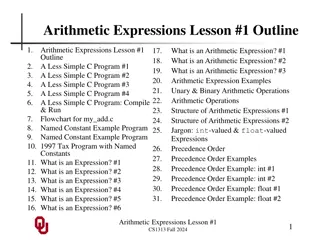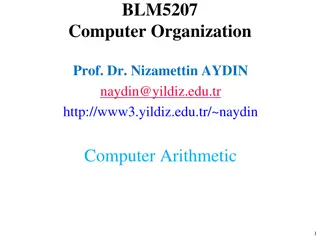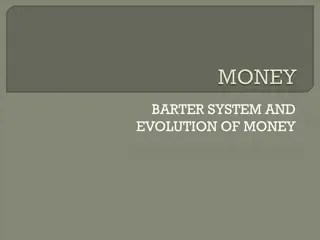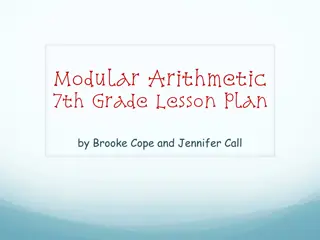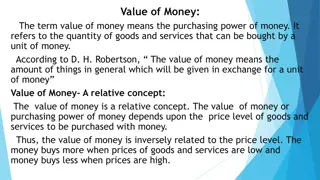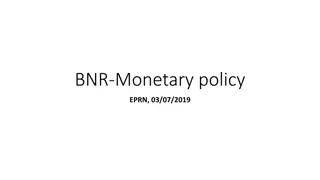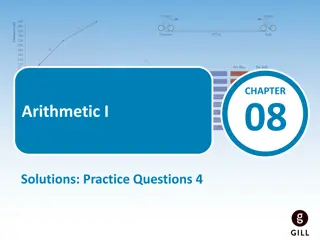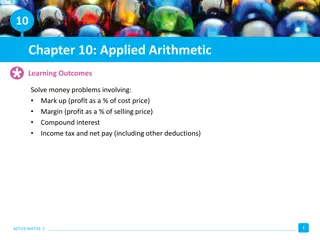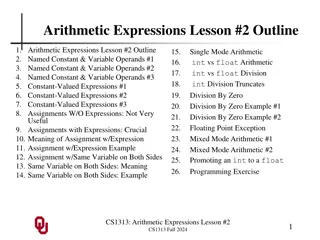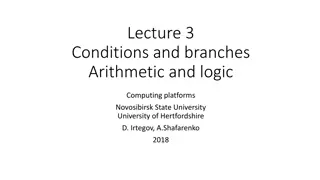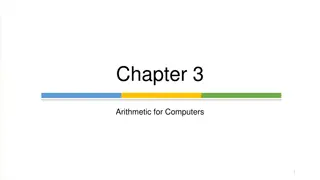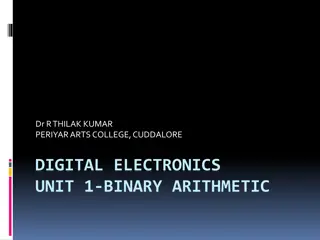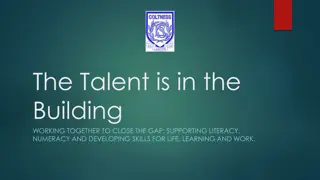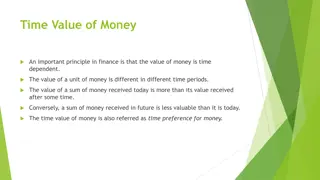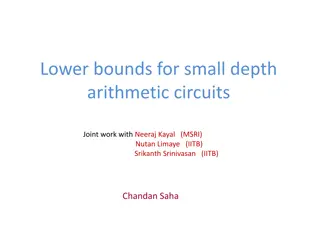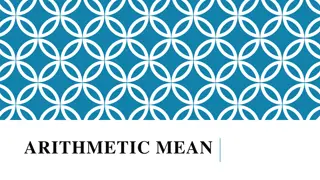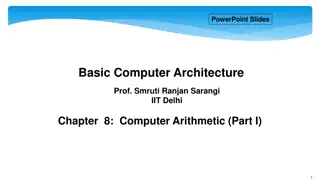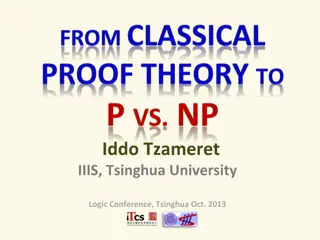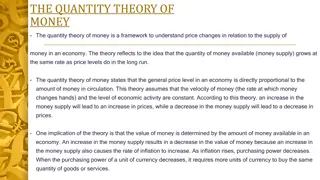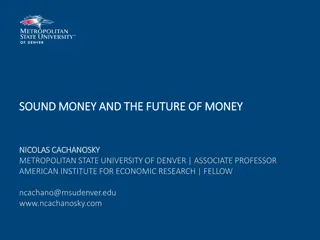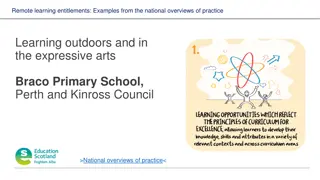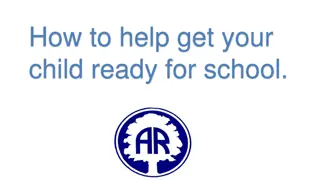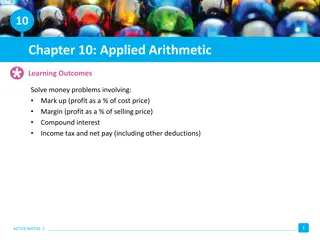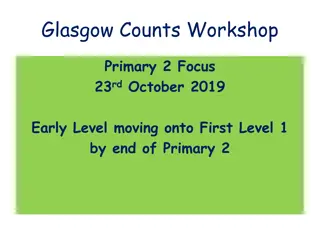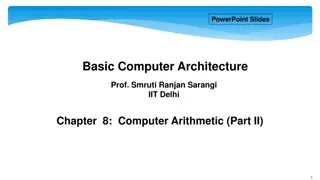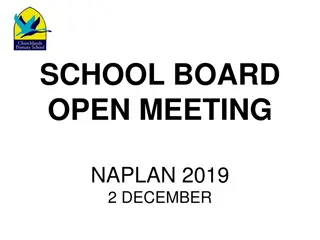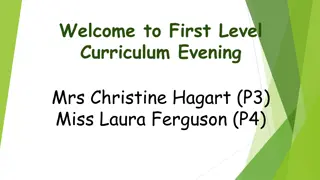Numeracy Support: Money, Time, and Arithmetic Problems Explained
Enhance your numeracy skills by learning how to calculate total costs, convert currency, work with time units, and solve arithmetic problems involving money. Practice scenarios like calculating travel expenses, managing group costs, and scheduling daily routines. Improve your understanding of numeracy concepts through practical examples and step-by-step explanations.
Download Presentation

Please find below an Image/Link to download the presentation.
The content on the website is provided AS IS for your information and personal use only. It may not be sold, licensed, or shared on other websites without obtaining consent from the author. Download presentation by click this link. If you encounter any issues during the download, it is possible that the publisher has removed the file from their server.
E N D
Presentation Transcript
Skills test Numeracy support Written Arithmetic Problems Money Time Proportion and ratio Measurements Averages Using simple formulae
Money What you need to know How to work out total costs - including with sales, special deals, taxes and credit card or delivery charges. How to work out expense claims. How to calculate income, expenditure, profit and loss. How to convert money from one currency to another.
A teacher travels from school to a training centre and back again. The training centre is eight miles away from the school, and the teacher can claim thirty-five pence per mile in expenses. How much money can the teacher claim in total? What are the key numbers? 8 Miles each way 35p per mile 8 x 2 = 16 miles (there and back) 16 x 35= 10 x 35 = 350 6 x 35 = 180+ 30 = 210 Total = 350 + 210 = 560 = 5.60
Thirty students travel to Germany on a school trip. Each of the students changes 80 into Euros at an exchange rate of 1: 1.26. Each student must pay 24 to stay in a hostel, and the group must split the 165 cost of the coach between them. How much money, in Euros, will each student be left for the trip? What is the key information? (Calculator) 30 students 80 1 = 1.25 24 165 First convert pounds to euros 80 = how many euros? 1 = 1.26 so 80 = 1.26 x 80 = 100.8 Split the cost of the coach = 165 30 = 5.5 100.8 5.5 24 = 71.3 So the answer is 71.30
Time What you need to know: How to work with different units of time (seconds, minutes and hours) How to work out the total of several periods of time. How to use both 12-hour and 24-hour clocks. How to work with 'school weeks'. (Monday Friday)
A school day begins at 8:55am. In the morning session, there are two fifty-minute lessons, then a fifteen minute break, and then one more fifty minute lesson. What time does the morning session end? What are the key numbers? 8.55 50 mins 50 mins 15 mins 50 mins 50 x 3 = 150 mins 150 + 15 = 165 mins What do I know about time? 165 120 = 45 8.55 + 2 hours 45 mins Round the 8.55 up to 9 then add on the 2h 45 min = 11.45 Then take away the 5 mins you added = 11.40 1 hour = 60 mins, 2 hours = 120 mins, 3 hours = 180 mins
A parents evening starts at 15:45. A teacher needs to see 26 parents, and each parent has a 6 minute appointment with the teacher. Midway through the parents evening, the teacher takes a 20- minute break. At what time can the teacher expect to leave the parents evening? What is the key information? (Calculator paper) 15.45 26 x 6mins 20mins 26 x 6 = 156 156 + 20 = 176 (4 minutes less than 3 hours) 1 hour = 60 mins, 2 hours = 120 mins, 3 hours = 180 mins 15.45 + 3 hours = 18.45 18.45 4 minutes = 18.41
Averages Mean- One measure of the 'average' of a set of data You find the mean by totalling the amounts and then dividing by the number of items Median - It is the middle number of a series of numbers or quantities when arranged in order, e.g. from smallest to largest Mode - It is the most common number in any group of data Range - The difference between the lowest and the highest values in a set of data 5, 7, 6, 7, 3, 8
Ratio or Proportion: Whats the difference? Proportion in every Ratio for every To make a fruit punch I mix three glasses of orange juice with one glass of apple juice. What sentences can you write about the fruit punch using the language of ratio and proportion? Ratio = for every 1 apple I add 3 oranges = 1:3 ? ? Proportion = 1 in every 4 parts is apple juice and 3 in every 4 parts are orange juice = 1:4 or
Some conversions you need to remember 1 centimetre (cm) 10 millimetres (mm) Mass Hint Remember 1 litre is 1000 ???, so we can work with bottles of 1000??? rather than 1 litre. Capacity 1000 millilitres (ml)
For a science experiment a teacher needed 850 millilitres of vinegar for each pupil. There were 20 pupils in the class. Vinegar comes in 1 litre bottles. How many bottles of vinegar were needed? For 20 pupils the amount of vinegar needed is 20 (pupils) x 850 millilitres (vinegar per pupil) = 17000 Question asks how many bottles of vinegar were needed Answer = 17 bottles (rounding up so that we have enough vinegar)
Tips when Converting km to miles and miles to kms A km is shorter than a mile! Km Mile 1 mile = 1.6 km or 8 1 km = 5 8 (0.625) miles 5 km
Tips when Converting km to miles and miles to kms A teacher plans a school trip to Brussels, which involves using a ferry from Ostend. The teacher wants to be in Ostend no later than 18:00. She expects their coach to travel from Brussels to Ostend, a distance of 120km, at an average of 50 miles per hour. Using the approximation of 5 miles equals 8 kilometres, what is the latest time that the coach should leave Brussels? Give your answer using the 24-hour clock. What is the calculation and what is the key information? 120 km 50miles per hour 18.00 First convert the km into miles 5 Next 50 miles = 1 hour 25 miles = 30 mins so the journey will take 1 hour 30 mins 18.00 + 1 hour 30 = 19.30 Remember 1 mile = 1.6 km or 8 1 km = 5 8 mile 5 km 8 x 120 = 75 miles
Conversions A car averages 36 miles per gallon. How many gallons would it need for a return journey from London to Leeds, which is 216 miles each way? What s the calculation? Double 216 = 432 miles 432 36 =
Using Formulae Being able to apply given formulas from a question. For example, using this formula: 90 + 5x + 2y find the missing letters.
Using formulae The cost of taking a school group of x adults and y children on a trip to a museum can be worked out using the formula below: Cost (in s) = 90 + 5x + 2y What is the total cost of taking a group of 18 adults and 65 children to the museum? What do we know? x = adults: so we have 18 adults = 5 x 18 = 90 y = children: so we have 65 children = 2 x 65 = 130 Rewrite the formulae with these numbers instead of the x and y 90 + 90 + 130 = 310 Cost in pounds is 310







